Much of the look of a curly horse mane comes down to genetics, however good grooming practices and a few of my recommended products can help your curly horse grow a thicker, longer mane.
Like curly horse body coats, curly horse manes come in many different variations. In this article, we’ll discuss the types of curly manes and best practices for caring for them.
In the curly horse world, individual horses are generally considered to “have it” or “not have it” – “it” being the much-desired gene combination responsible for whether your curly horse has a long and luscious mane or only a few sparse hairs along the crest that require annual mane roaching to look presentable.
In 10 years of working with and around dozens of Bashkir Curly Horses, it’s my belief that genetics is only half of the equation. Some curlies seem to have an easier time growing a keeping a long curly mane, but often a sparse or non-existent mane, or a mane that rubs out easily, is as connected to horse keeping practices as it is to genetics.

Here are my tips for growing and protecting a long, luscious mane on a curly (or any other horse, for that matter).
1. Minimal combing (prevent dreds, but don’t untangle coils)
2. Biotin supplements
3. Worming and regular topical antifungal treatments
4. MTG
5. Fence maintenance. Use Electric tape to keep horses off fences. Trees in pastures may need fences as well.
6. Hose off your horse after heavy sweating to prevent itchy sweat buildup.
7. Create a Fur-Friendly Scratching Post
The following section may contain affiliate links. As an Amazon Associate, we earn from qualifying purchases.
One of the best ways to prevent itchy horses from rubbing on hair-abrasive surfaces is to provide an enticing spot to scratch.
Push broom heads, like the one pictured below, cost no more than a standard horse brush, but if mounted correctly can provide horses a satisfying (and safe!) spot to self-groom and scratch.
Mounted with bolts or lag screws to a free-standing wood fence post* or sturdy tree trunk, these broom heads can be used by a whole herd to groom, scratch, and rub against. Our horses love their tree that features fur-friendly scratches on demand. Push brooms are generally just the right consistency for relieving itchiness without damaging or pulling out hair.
* Do NOT mount a broom head on a metal fencepost or a fence post connected to fencing. Horses will frequently paw, roll, and generally goof-off near their scratching post. Be sure the nearby area is free of hazards or fencelines where a horse could be caught or cast under a nearby fence.
After completely rubbing out his mane in the summer, this photo shows a Bashkir curly mane growth just after Christmas, after 7 months of using MTG several times a week. For years, I have tested about a dozen different horse care products (including vitamins and feed supplements) that claimed to help mane and tails grow faster and thicker, but none ever really worked except Shapely’s MTG.
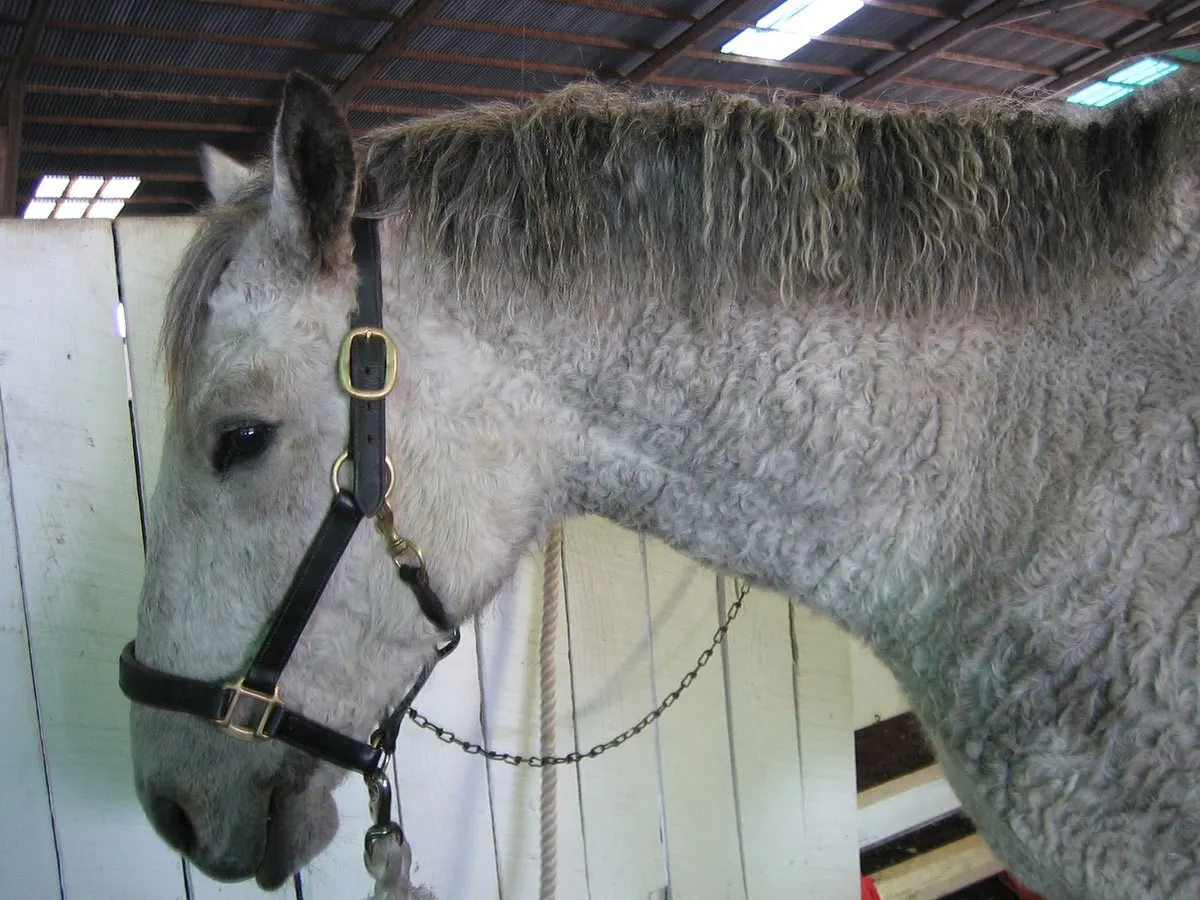
MTG is oily, it’s kind of hard to apply, it leaves a visible residue on mains and tails and leaves stains on white breeches, BUT when applied consistently, it really does work to grow thicker stronger mane and tail hairs. One trick when using MTG is to swap out a different bottle for the manufacturer’s packaging. Manufactures often poorly design applicator bottles in order to increase profit when product is used wastefully, so to combat this, shake up a bottle of MTG and pour it into comb-style applicator bottle (the same bottle that human beauty salons use to apply dye). Decanting into an bottle designed for easy and mess-free application can save money, use less product, and make sure the solution ends up where it’s supposed to be at the roots of the hair at the crest of the mane.
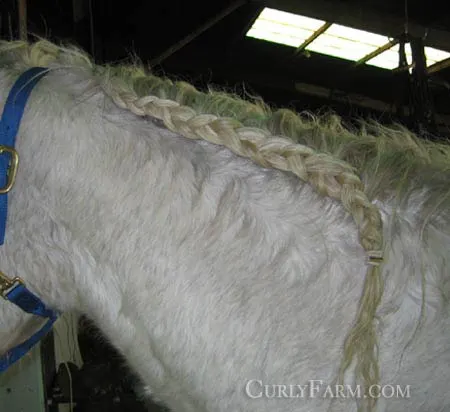
Once a Curly horses mane is grown in, a running braid can be a helpful way to keep wild manes in check during training, conditioning, or for shows. Check out our article on running braids for a DIY tutorial.
The photo above shows a white bashkir curly horse mane braided up into an inside-out running braid. This braid is accomplished by french braiding the mane, but braiding sections by plaiting them under instead of over. The braided section “pops” out this way.
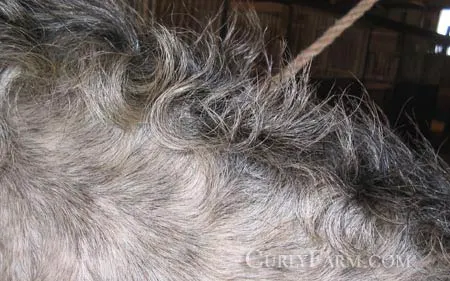
Many bashkir curlies shed out their mane and tail year-round and every spring, but just as many curlies keep their mane and tail- but have “delicate” hair. Because of the tangly nature of curly hair, curly horses adapted to living in the wild and rather than be snagged by a corded mane, the follicles developed very “loose”. Because of this, typical scratching that wouldn’t disturb most horses’ mane, can leave a curly mane looking roached! The best way to prevent this is to use an antifungal spray or shampoo on the mane occasionally to prevent irritating fungus/dirt/pests before they cause itching, and to use solid or electric fencing. (Reaching through post and rail or pipe fencing is the most common way a curly will rub their mane out- electric fence or mesh-type fencing that cannot be breached prevents this problem.)
Curly Horse Manes with Dreadlocks
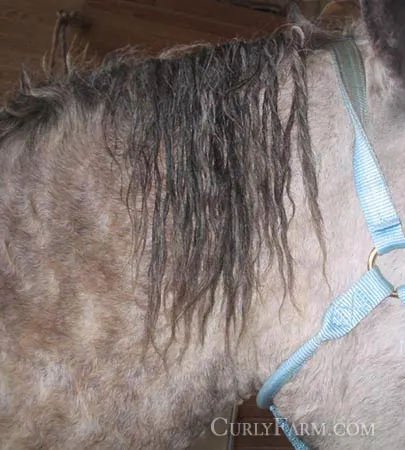
Some curly horse manes form their mane into thin coils, others into thick dreadlocks. This horse’s mane was roached, and when the mane grew back it naturally fell into thick dreadlocks. Trying to completely comb out a mane like this typically results in frizz and instant tangles, although leaving the main braided can help. Dreadlocks on the horses often contain a lot of dead hair, it is recommended to trim them using thinning shears once or twice a year in order to encourage healthy mane growth and minimize potential fungal issues. When you noticed that the bottom section of the dreadlocked is significantly wider than the portion closest to the crest of the neck, it’s time to groom the dreadlocks.
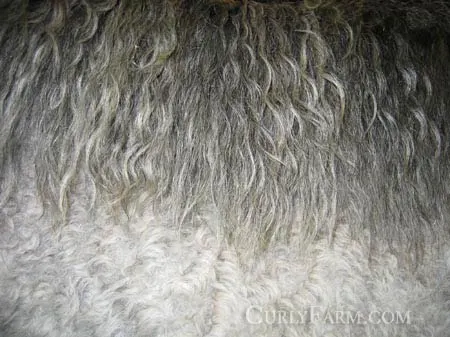
This photo shows the characteristic curly mane of a Bashkir Curly. Some curlies shed their tightly curled manes, others have long dreadlocked manes. This curly horse’s mane is somewhere between the two.
